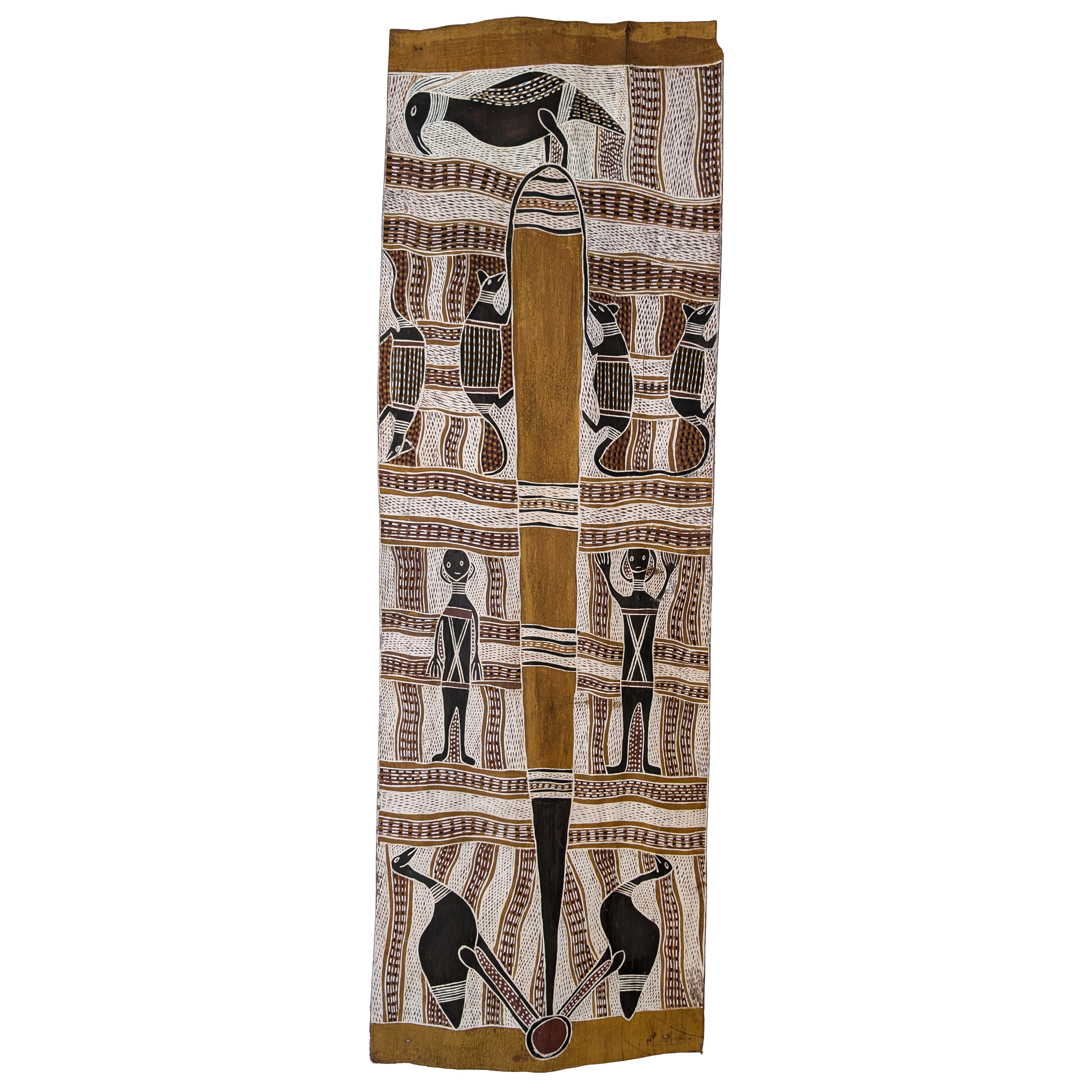
Artist: Narritjin Maymuru | Title:The Journey of the Possum and Guwuk to Djarrakpi | Year: 1979 | Medium: natural earth pigments on stringybark | Dimensions: 136 x 44 cm
PROVENANCE
Purchased from Yirrkala Art: An Exhibition of Aboriginal Bark Paintings and Carvings, an exhibition presented and arranged by the Department of Prehistory and Anthropology, Australian National University (ANU), and curated by Howard Morphy.
Subsequently held in a private collection.
EXHIBITED
Yirrkala Art: An Exhibition of Aboriginal Bark Paintings and Carvings, 1976, Australian National University, curated by Howard Morphy. No. 5 in the ANU catalogue.
POA
Email adrian@newsteadart.com to enquire about this work.
ARTWORK STORY
Narritjin Maymuru created this bark painting while he was a visiting fellow at the Humanities Research Centre at ANU in 1979, working alongside his son Banapana. A painting of the sacred Marawili tree at Djarrakpi. The possums are shown climbing up and down the tree spinning fur string. A white cockatoo (Nyirrk) is sitting on top of the tree. The emus are scratching for water among the sandhills while the female Mokoys, Nyapilingu spirits look on.
ARTIST PROFILE
COMMUNITY/ REGION
North-east Arnhem Land
LANGUAGE
Manggalili
BIOGRAPHY
At the time of his death in 1981, Narritjin Maymuru along with his brother Nanyin, and a classificatory brother Bokarra were the leaders of the Manggalili clan, a small nomadic group of about fifty people, who lived at Djarrakpi (Cape Shield), in North East Arnhem Land… Continue Reading
PROVENANCE
Purchased from Yirrkala Art: An Exhibition of Aboriginal Bark Paintings and Carvings, an exhibition presented and arranged by the Department of Prehistory and Anthropology, Australian National University (ANU), and curated by Howard Morphy.
Subsequently held in a private collection.
EXHIBITED
Yirrkala Art: An Exhibition of Aboriginal Bark Paintings and Carvings, 1976, Australian National University, curated by Howard Morphy. No. 5 in the ANU catalogue.
POA
Email adrian@newsteadart.com to enquire about this work.
ARTWORK STORY
Narritjin Maymuru created this bark painting while he was a visiting fellow at the Humanities Research Centre at ANU in 1979, working alongside his son Banapana. A painting of the sacred Marawili tree at Djarrakpi. The possums are shown climbing up and down the tree spinning fur string. A white cockatoo (Nyirrk) is sitting on top of the tree. The emus are scratching for water among the sandhills while the female Mokoys, Nyapilingu spirits look on.
ARTIST PROFILE
COMMUNITY/ REGION
North-east Arnhem Land
LANGUAGE
Manggalili
BIOGRAPHY
At the time of his death in 1981, Narritjin Maymuru along with his brother Nanyin, and a classificatory brother Bokarra were the leaders of the Manggalili clan, a small nomadic group of about fifty people, who lived at Djarrakpi (Cape Shield), in North East Arnhem Land… Continue Reading

